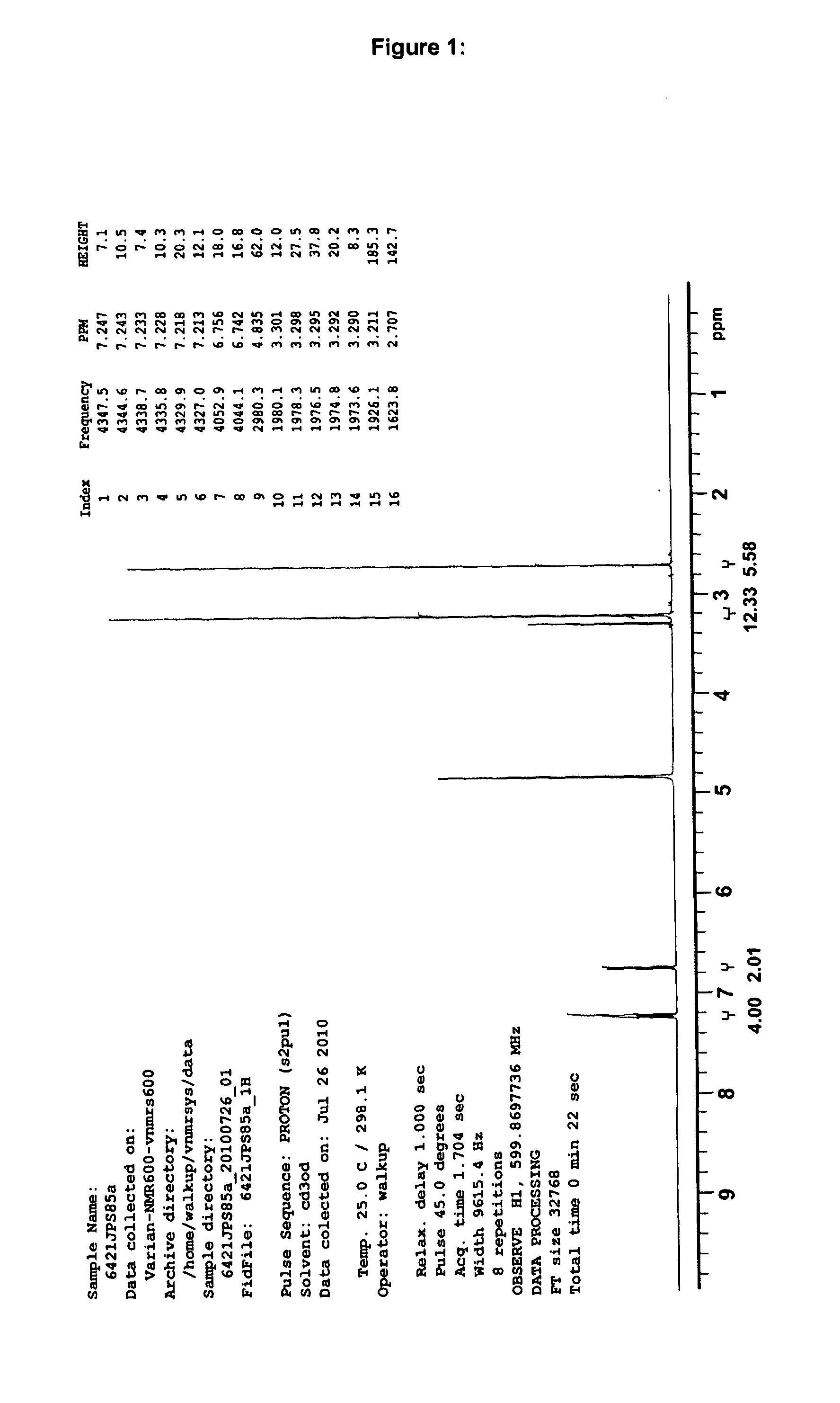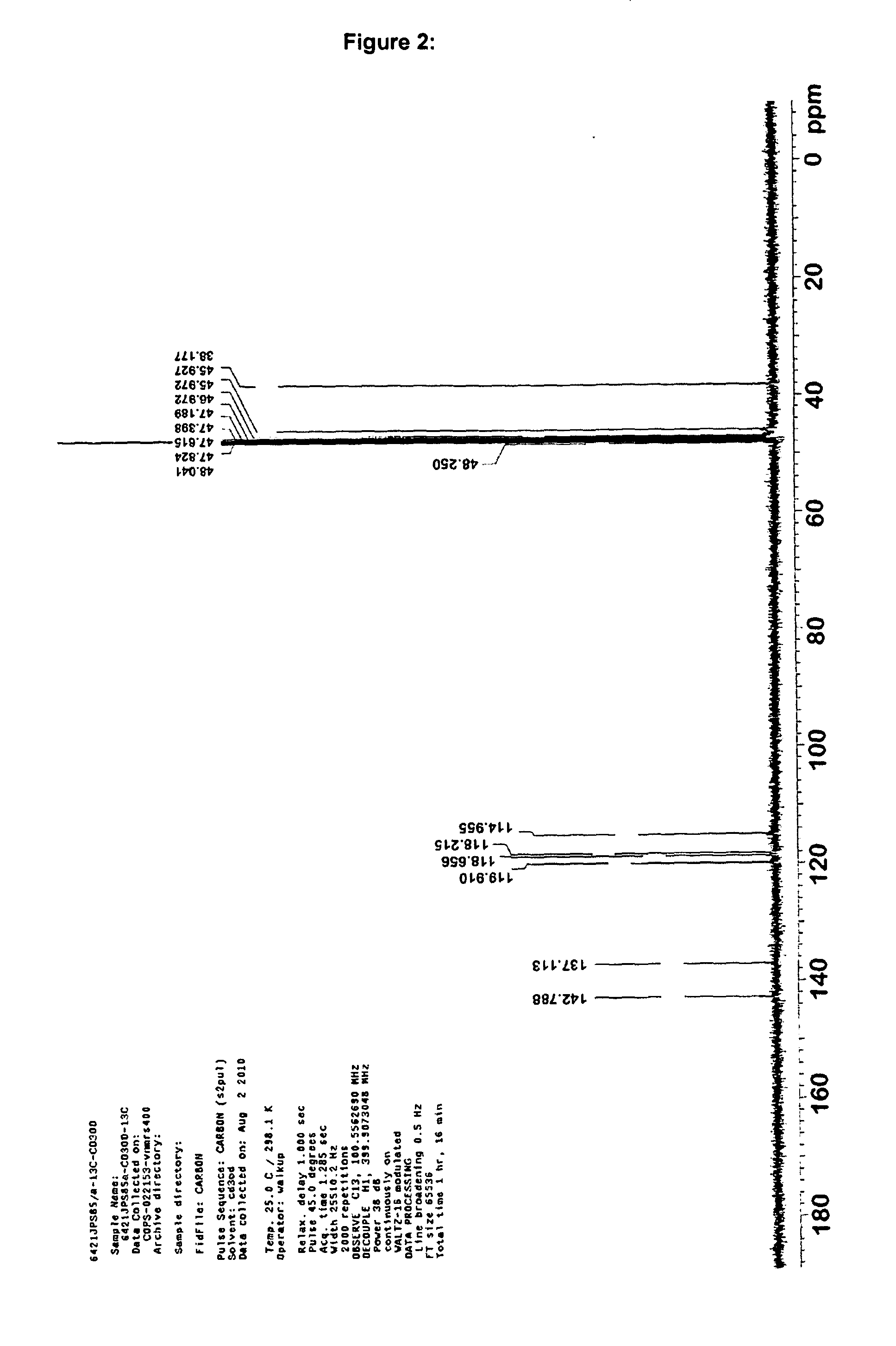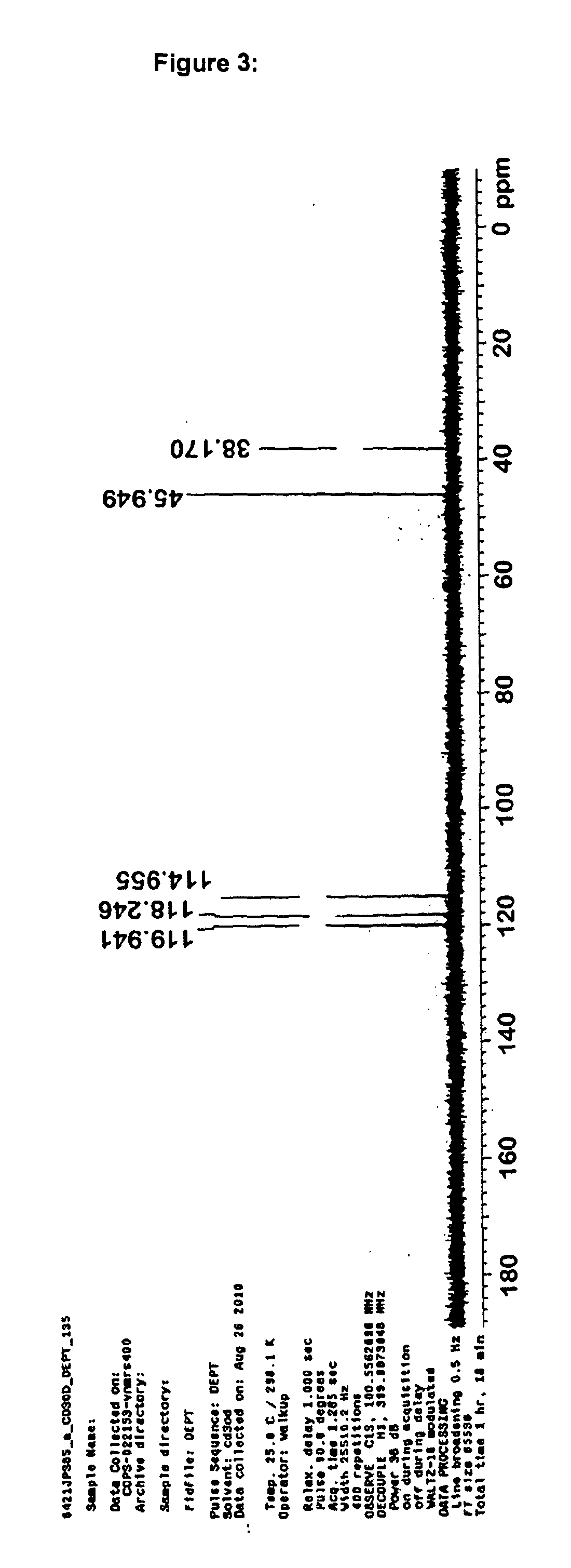Phenothiazine diaminium salts and their use
- Summary
- Abstract
- Description
- Claims
- Application Information
AI Technical Summary
Benefits of technology
Problems solved by technology
Method used
Image
Examples
example 1
Synthesis and Characterisation
Laboratory synthesis of 10-Acetyl-N,N,N′,N′-tetramethylphenothiazine-3,7-diamine
[0524]
Synthesis of 3,7-dinitro-10H-phenothiazine (2)
[0525]To a 3 necked 1 litre round bottom flask (RBF) fitted with a thermometer, dropping funnel and a condenser was added phenothiazine (MW 199.28 g / mol, 25.00 g, 125.5 mmol) and dimethylsulfoxide (250 ml) the mixture was stirred for 2 minutes or until the phenothiazine dissolved. The condenser was then connected to a Dreschel bottle half filled with water. Sodium nitrite (MW 69.00 g / mol, 51.94 g, 752.7 mmol) was then added to the RBF and acetic acid (150 ml) was added to the dropping funnel. The acetic acid was then added to the RBF in a drop-wise fashion over a 20 minute period. The light yellow slurry becomes red in colour and a solid precipitated out of solution. Upon completion of the acetic acid addition the mixture was stirred for 2 hours at ambient temperature (36-20° C.) before increasing the temperature to 95° C. ...
example 2
Solubility Studies
i) Solubility of N,N,N′,N′-tetramethyl-10H-phenothiazine-3,7-diaminium dibromide, dichloride and bis(methanesulphonate) (LMT.2HBr, LMT.2HCl and LMT.2MsOH) salts
[0642]Two aqueous solutions (pH 2.00 and 3.01 at 21.4° C.) were prepared by carefully adding HCl (5 M) to deionised water.
[0643]In each experiment a 5 ml aliquot of one of the aforementioned solutions was heated to 37° C. A portion of the appropriate salt (LMT.2MsOH, LMT.2HCl or LMT.2HBr) was added and the mixture stirred for a few moments to allow for complete dissolution of the solid. This step was repeated until no further dissolution took place.
[0644]The results are shown in the Table:
SaltpH (21.4° C.)g / 5 ml* (37° C.)LMT.2HBr3.014.726-5.236LMT.2HBr2.004.822-5.096LMT.2HCl3.014.978-6.029LMT.2HCl2.004.404-4.961LMT.2MsOH2.008.825-9.943*Lower limit of range corresponds to total weight at which complete dissolution was observed. Upper limit is total weight added before saturation was achieved
[0645]As can be se...
example 3
Inhibition of Aggregation and Toxicity
Methods: Solid Phase Assay for Tau Aggregation
[0655]The tau-tau aggregation assay uses purified recombinant tau fragments in a solid-phase immunoassay. Methods are described in detail in e.g. WO 96 / 30766. Briefly, the assay measures the binding of truncated tau (amino acids 297-391) in solution to solid-phase bound truncated tau (residues 297-390). Binding of the former is detected with the antibody mAb 423, which specifically recognises peptides containing a C-terminal Glu-391 residue. The Tau complex formed in vitro is similar to the aggregated complex that forms in Alzheimer's disease as a consequence of the stability of the pathological Tau-Tau binding interaction through a 94 / 95-amino acid repeat domain (residues 297-390), found in the proteolytically stable core of the paired helical filament.
[0656]The B50 value (expressed as mean±SE) is determined as the concentration of compound at which tau-tau binding is decreased by 50%.
Methods: Cell-...
PUM
| Property | Measurement | Unit |
|---|---|---|
| Fraction | aaaaa | aaaaa |
| Fraction | aaaaa | aaaaa |
| Size | aaaaa | aaaaa |
Abstract
Description
Claims
Application Information
 Login to View More
Login to View More - R&D
- Intellectual Property
- Life Sciences
- Materials
- Tech Scout
- Unparalleled Data Quality
- Higher Quality Content
- 60% Fewer Hallucinations
Browse by: Latest US Patents, China's latest patents, Technical Efficacy Thesaurus, Application Domain, Technology Topic, Popular Technical Reports.
© 2025 PatSnap. All rights reserved.Legal|Privacy policy|Modern Slavery Act Transparency Statement|Sitemap|About US| Contact US: help@patsnap.com



